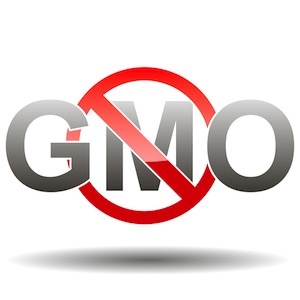Are you putting Monsanto in your vagina? 85% of tampons and feminine hygiene products contaminated with cancer-causing glyphosate herbicide

In the late 1970s and early 1980s, over 50 American women were killed by their tampons. Although the FDA and the feminine hygiene industry have gone to tremendous lengths to try to memory hole this true history (and label it just a "rumor"), tampons made from certain non-natural fibers were found to harbor deadly bacteria and release a sufficient quantity of chemicals to kill or injure over a thousand women.
As the Organic Consumers Association has published http://www.organicconsumers.org/old_articles/bodycare/tampons090704.php:
The worst offenders were Procter and Gamble’s ultra-absorbent Rely tampons. According to the book Soap Opera: The Inside Story of Procter and Gamble, the company dismissed consumer complaints about the tampons for years. A 1975 company memo disclosed that Rely tampons contained known cancer-causing agents and that the product altered the natural organisms found in the vagina. Rely tampons were taken off the shelves in 1980, but many women claim they left a legacy of hysterectomies and loss of fertility.
Among health-conscious women, the toxicity of mainstream tampons has long been an issue of concern. "Just as I say heck no to Cottonseed oil, it is for the same reason I say heck no to sticking toxic cotton up into my nethers," writes Meghan Telpner http://www.meghantelpner.com/blog/part-2-tampax-tampons-toxic-sticks-of-death/. "Did ya know that 84 million pounds of pesticides are sprayed on 14.4 million acres of conventional cotton grown each year in the US."
She continues:
The rayon/viscose used in Tampax is made from wood pulp. Last I checked, there were no such thing as rayon trees and trees don't magically turn into rayon- it takes hundreds of chemicals. The chlorine bleaching of wood pulp is where the greatest danger lies. The process creates chlorinated hydrocarbons, a hazardous group of chemicals with byproducts that includes dioxins, some of the most toxic substances known. Parts per million my cooch! There are no safe levels dioxins, they are impossible to break down and so keep building up in our tissues.
Now Monsanto's toxic herbicide has been found in 80% of feminine hygiene products
Fast forward to 2015. Now glyphosate http://www.truthwiki.org/glyphosate/, the chemical found in Monsanto's "RoundUp" herbicide used on genetically modified cotton crops, is being discovered in the vast majority of feminine hygiene products.
The research team from National University of La Plata http://www.unlp.edu.ar/ headed by Damian Marino revealed their research findings last weekend. Note carefully that such research would never be conducted in a U.S. university because they've been infiltrated and bought off by Monsanto http://www.truthwiki.org/monsanto/. Example: Discredited professor Kevin Folta at the University of Florida http://www.truthwiki.org/dr-kevin-folta-university-of-florida/, who was caught receiving $25,000 from Monsanto after publicly lying that he had no financial ties to the herbicide company. Even though Folta has been exhaustively exposed as a liar and a violator of university ethicshttp://www.gmo.news/2015-09-08-academias-biotech-prostitutes-exposed-gmo-secret-emails-monsanto-kevin-folta-of-the-university-of-florida-biofortified-boys.html, the University of Florida sees nothing wrong with such deceptions. Click here to read the secret letter where Monsanto agrees to pay him $25,000 http://www.gmo.news/2015-09-17-25000-monsanto-money-letter-to-kevin-folta-emerges-univ-of-florida-professor-promises-a-solid-return-on-the-investment-2.html.
"A team of Argentine scientists found traces of glyphosate in 85% of personal care and feminine hygiene products containing cotton and commonly purchased in drugstores and supermarkets," writes Revolution News http://revolution-news.com/argentina-study-found-glyphosate-in-cotton-tampons-gauze-pads-swabs/.
"The study looked at a sampling of products from pharmacies and supermarkets in the area of La Plata, and analyzed cotton swabs, gauze and articles for feminine use. The results from all commercial products detected 85% glyphosate and 62% AMPA (metabolite or derivative of glyphosate). Almost 100% of the cotton produced in Argentina is transgenic and glyphosate applications are made while the cocoon is open."
Also reported by Revolution News:
“The report left us shocked,” said Dr. Medardo Ávila Vázquez, a conference participant and from Cordoba.
“We had focused our attention on the presence of glyphosate in food, but did not think the products we use in all hospitals and health centers in the country to cure patients are contaminated with a carcinogenic product. The authorities must give an immediate response to this situation.”
Glyphosate is known to cause cancer, but propagandists are paid to cover up the truth
Glyphosate is a known cancer-causing chemical. The World Health Organization has classified it as "probably carcinogenic," http://www.dreddyclinic.com/forum/viewtopic.php?f=15&t=31949 and many other studies clearly link it to an endocrine disruption process that leads to cancer.
The EPA conspired with Monsanto for decades http://www.dreddyclinic.com/forum/viewtopic.php?f=15&t=31697 to deceive the public into thinking glyphosate was harmless, even after knowing the molecule was extremely dangerous.
Forbes.com, named "America's most evil news publisher" by EVIL.news http://www.evil.news/2015-09-28-americas-top-12-most-evil-news-publications.html, has been instrumental in publishing Monsanto's propaganda via the corporation's paid professional propagandists such as Henry Miller http://www.truthwiki.org/henry-i-miller/ and Jon Entine http://www.truthwiki.org/jon_entine/. Both have been exposed as "GMO mercenaries" who betray humanity and advocate the chemical poisoning of the world in exchange for money.
Glyphosate http://glyphosate.news/ has even been found to promote cancer at parts per trillion concentrations http://dreddyclinic.com/forum/viewtopic.php?f=122&t=33001, meaning that even low-level exposure from tampons might lead to deadly cancers in women. (The GMO industry says women who are concerned about GMOs are "anti-science" and too stupid to understand technology.)
It is inarguable that the human vagina readily absorbs chemicals found in tampons. When those tampons are made from GMO cotton -- the vast majority of cotton that's commercially grown -- they almost always contain glyphosate that gets absorbed through vaginal walls and enters the bloodstream.
This means that even beyond glyphosate contamination in food, women must now consider the possibility that they are being poisoned from glyphosate in the vagina via genetically modified cotton used in tampons and other hygiene products.
To all the bought-off female journalists who are pushing Monsanto's agenda -- like Tamar Haspel of the Monsanto-infiltrated Washington Post http://www.truthwiki.org/tamar-haspel-washington-post-columnist/ -- SHAME ON YOU for advancing the chemical industry's war on women.
Why you should only use organic feminine hygiene products
The only sure way to avoid GMOs in your vagina is to source certified organic feminine hygiene products made from organic cotton or other organic materials.
It's easy for consumers to forget that their blue jeans are made from GMO cotton saturated with glyphosate... or that the cotton gauze in their first aid kits are also made with GMO cotton and glyphosate. In fact, even cotton swabs and cotton balls are usually GMO.
So if you really want to stop putting Monsanto in your vagina (or your ears, nose and other place in your body), you'll need to meticulously source organic, non-GMO products for such needs.
Monitor all the real-time breaking news on organics at Organics.news or visit AlternativeNews.com throughout the day.

Sources for this article include:
http://revolution-news.com/argentina-study-found-glyphosate-in-cotton-tampons-gauze-pads-swabs/
http://www.organicconsumers.org/old_articles/bodycare/tampons090704.php
http://www.meghantelpner.com/blog/part-2-tampax-tampons-toxic-sticks-of-death/
http://www.truthwiki.org/glyphosate/
http://www.unlp.edu.ar/
http://www.truthwiki.org/monsanto/
http://www.truthwiki.org/dr-kevin-folta-university-of-florida/
http://www.gmo.news/2015-09-08-academias-biotech-prostitutes-exposed-gmo-secret-emails-monsanto-kevin-folta-of-the-university-of-florida-biofortified-boys.html
http://www.gmo.news/2015-09-17-25000-monsanto-money-letter-to-kevin-folta-emerges-univ-of-florida-professor-promises-a-solid-return-on-the-investment-2.html
http://www.dreddyclinic.com/forum/viewtopic.php?f=15&t=31949
http://www.dreddyclinic.com/forum/viewtopic.php?f=15&t=31697
http://www.evil.news/2015-09-28-americas-top-12-most-evil-news-publications.html
http://www.truthwiki.org/henry-i-miller/
http://www.truthwiki.org/jon_entine/
http://dreddyclinic.com/forum/viewtopic.php?f=122&t=33001
http://www.truthwiki.org/tamar-haspel-washington-post-columnist/
Read more
9 Incredible Health Benefits of Folate
Folate, or vitamin B9, is one of many essential vitamins. You may also be familiar with folic acid as a form of folate; folic acid is the synthetic version used for food fortification and supplements. Folate is important because it plays a role in DNA synthesis and repair. It encourages cell and tissue growth. In fact, these benefits barely scratch the surface and its effects are far reaching. That bring us to nine incredible health benefits of folate.

1. Supports Normal Fetal Development
Folate plays an integral role in fetal development http://www.dreddyclinic.com/forum/viewtopic.php?f=42&t=33840 and the benefits for pregnant women and their offspring cannot be understated. Folate deficiency during early pregnancy can lead to neural tube defects. This is a serious problem that can lead to pregnancy termination or a baby born with spina bifida. [1] The good news? Studies have found increased folate levels from one month prior to conception to 3 months afterward can reduce the chance of these defects by 50%. [2]
2. Promotes Sperm Viability
Studies exploring the role of folate in spermatogenesis have linked it to sperm health and function. [3] Men with a lower folate intake have been shown to have sperm with incorrect chromosomal structure. [4] A 2012 study reported that previously infertile patients who took a nutritional supplement, which included folic acid, experienced significant improvement in sperm motility and successfully achieved pregnancy with their partners. [5]
3. Great for the Heart
Folate helps metabolize homocysteine into methionine, an essential amino acid. Without adequate folate, homocysteine levels increase. You don’t want this; homocysteine has been linked to atherosclerosis and cardiovascular problems http://www.dreddyclinic.com/forum/viewtopic.php?f=106&t=32685. [6] The evidence is clear, to encourage cardiovascular health http://www.dreddyclinic.com/forum/viewtopic.php?f=21&t=33644 by facilitating the breaking down of homocysteine, folate is incredible.
4. May Reduce the Risk of Stroke
Not only is homocysteine bad for the heart, it can lead to stroke http://www.dreddyclinic.com/findinformation/ss/stroke.php. An overabundance of homocysteine, or hyperhomocysteinemia, results from a breakdown in the methionine-homocysteine metabolism. This results in increased chances of blood vessel damage and blood clotting. Although stroke can have many causes and no one measure is a complete safeguard, folate, or the supplemental form folic acid, have been recommended for use to reduce the risk. [7]
5. Encourages Normal Cholesterol Levels
A Polish study found folic acid supplementation encourages normal cholesterol levels. In the study of 124 individuals, researchers observed significant reductions in LDL cholesterol levels in subjects who’d supplemented with .4 mg of folic acid daily for 12 weeks. The result is believed to have been derived from reduced homocysteine levels. [8]
6. Provides Neurological Support
Research suggests there may be a link between folate levels and neural health. A Korean study of elderly patients found that those suffering from dementiahttp://www.dreddyclinic.com/forum/viewtopic.php?f=34&t=32005 had the highest levels of homocysteine, and the lowest folate levels. Patients in the control group who did not suffer from dementia had higher folate levels. [9]
7. Helps Perinatal Mood Management
Often, perinatal depression cannot be addressed with pharmaceuticals due to concern for the child. This has led researchers to seek out more safe, natural alternatives. Folate, along with other B vitamins, is known to encourage the creation and absorption of neurotransmitters. Some experimental studies have indicated that micronutrients, including folic acid, can improve symptoms and outcomes. [10]
8. Great for Colon Health
Could folate be good for your colon? A 2013 case control study linked folate intake to gene activation that alters the chances of developing colorectal cancer. [11] It’s also a testament to the importance of diet at the cellular level.
9. Reduces the Risk of Age-Related Macular Degeneration
A Harvard Medical School trial of women with a risk of age-related macular degeneration (AMD) explored the impact of B vitamin therapy (including folic acid, vitamin B6, and B12). The control group had a higher incidence of AMD than the group taking the B vitamin therapy. Researchers concluded that daily supplementation might help the fight in reducing the risk of AMD. [12]
Folate: The Facts are Clear
Within the body, folate is an activator http://www.dreddyclinic.com/forum/viewtopic.php?f=21&t=32698. It has a positive action on cardiovascular, neural and psycho-emotional health. The research suggests that maintaining a consistent dietary intake of folate is essential to managing homocysteine metabolism and protecting long-term health. I agree. Is folate part of your nutrient intake? What’s your favorite source of folate http://www.dreddyclinic.com/forum/viewtopic.php?f=21&t=32699? Please leave a comment below and share it with us!
by Dr. Edward Group DC, NP, DACBN, DCBCN, DABFM
References:
1. Kondo A, Morota N, Ihara S, Saisu T, Inoue K, Shimokawa S, Fujimaki H, Matsuo K, Shimosuka Y, Watanabe T. Risk factors for the occurrence of spina bifida (a case-control study) and the prevalence rate of spina bifida in Japan http://www.ncbi.nlm.nih.gov/pubmed/24078478. Birth Defects Res A Clin Mol Teratol. 2013 Sep;97(9):610-5. doi: 10.1002/bdra.23179.
2. Manniën J, de Jonge A, Cornel MC, Spelten E, Hutton EK. Factors associated with not using folic acid supplements preconceptionallyhttp://www.ncbi.nlm.nih.gov/pubmed/24107718. Public Health Nutr. 2013 Oct 10:1-7.
3. Ebisch IM, Thomas CM, Peters WH, Braat DD, Steegers-Theunissen RP. The importance of folate, zinc and antioxidants in the pathogenesis and prevention of subfertilityhttp://www.ncbi.nlm.nih.gov/pubmed/17099205. Hum Reprod Update. 2007 Mar-Apr;13(2):163-74. Epub 2006 Nov 11.
4. Young SS, Eskenazi B, Marchetti FM, Block G, Wyrobek AJ. The association of folate, zinc and antioxidant intake with sperm aneuploidy in healthy non-smoking menhttp://www.ncbi.nlm.nih.gov/pubmed/18353905. Hum Reprod. 2008 May;23(5):1014-22. doi: 10.1093/humrep/den036. Epub 2008 Mar 19.
5. Busetto GM, Koverech A, Messano M, Antonini G, De Berardinis E, Gentile V. Prospective open-label study on the efficacy and tolerability of a combination of nutritional supplements in primary infertile patients with idiopathic astenoteratozoospermia http://www.ncbi.nlm.nih.gov/pubmed/23210405. Arch Ital Urol Androl. 2012 Sep;84(3):137-40.
6. Joseph J, Loscalzo J. Methoxistasis: integrating the roles of homocysteine and folic acid in cardiovascular pathobiology http://www.ncbi.nlm.nih.gov/pubmed/23955381. Nutrients. 2013 Aug 15;5(8):3235-56. doi: 10.3390/nu5083235.
7. Terwecoren A, Steen E, Benoit D, Boon P, Hemelsoet D. Ischemic stroke and hyperhomocysteinemia: truth or myth? http://www.ncbi.nlm.nih.gov/pubmed/19902811 Acta Neurol Belg. 2009 Sep;109(3):181-8.
8. Mierzecki A, Koda K, Bukowska H, Chestowski K, Makarewicz-Wujec M, Kozowska-Wojciechowska M. Association between low-dose folic acid supplementation and blood lipids concentrations in male and female subjects with atherosclerosis risk factors http://www.ncbi.nlm.nih.gov/pubmed/24002360. Med Sci Monit. 2013 Sep 4;19:733-9. doi: 10.12659/MSM.889087.
9. Song JH, Park MH, Han C, Jo SA, Ahn K. Serum Homocysteine and Folate Levels are Associated With Late-life Dementia in a Korean Populationhttp://www.ncbi.nlm.nih.gov/pubmed/24159435. Osong Public Health Res Perspect. 2010 Dec;1(1):17-22. doi: 10.1016/j.phrp.2010.12.006.
10. Rechenberg K, Humphries D. Nutritional interventions in depression and perinatal depression http://www.ncbi.nlm.nih.gov/pubmed/23766734. Yale J Biol Med. 2013 Jun 13;86(2):127-37. Print 2013 Jun.
11. Ashmore JH, Lesko SM, Muscat JE, Gallagher CJ, Berg AS, Miller PE, Hartman TJ, Lazarus P. Association of dietary and supplemental folate intake and polymorphisms in three FOCM pathway genes with colorectal cancer in a population-based case-control study http://www.ncbi.nlm.nih.gov/pubmed/23893618. Genes Chromosomes Cancer. 2013 Oct;52(10):945-53. doi: 10.1002/gcc.22089.
12. Christen WG, Glynn RJ, Chew EY, Albert CM, Manson JE. Folic acid, pyridoxine, and cyanocobalamin combination treatment and age-related macular degeneration in women: the Women’s Antioxidant and Folic Acid Cardiovascular Study http://www.ncbi.nlm.nih.gov/pubmed/19237716. Arch Intern Med. 2009 Feb 23;169(4):335-41. doi: 10.1001/archinternmed.2008.574.
Read more
Low-carb diet almost kills new mom

A 32-year-old Swedish mom was rushed to the hospital with a life-threatening condition after going on a strict low-carbohydrate, high-fat (LCHF) diet to lose her baby weight. When they brought her in, she suffered from severe nausea, vomiting, heart palpitations, trembling and spasms in her limbs.
When the doctors questioned her, she told them she only ate about 20 grams of carbohydrates a day — the equivalent of a medium-sized potato or one banana — while breastfeeding her 10-month-old baby. The recommended daily value, for adults, is around 200-240 grams when on a 2,000 calorie diet.
Low-carb diets can trigger ketoacidosis
Carbs provide the body with much-needed energy. When carbs are removed from the diet, the body burns fat for energy. When our body starts to burn fat instead of carbs, ketones are created as a waste product. This is a process called ketosis.
Our body can perfectly handle small amounts of ketones, since ketone bodies that are not used are eliminated through the kidneys and urine.
While burning fat for energy may sound like a good thing, especially when you are trying to shed some pounds, ketones can build up in the blood, making it too acidic. If this worsens, it could lead to a condition called ketoacidosis. If left untreated, this may cause coma or even death.
Luckily, this new mom was diagnosed in time. Doctors gave her sugar infusions and small doses of human insulin to reverse the ketoacidosis. After three days, she felt well enough to be released from the hospital.
First non-diabetes related case of ketoacidosis
Ketoacidosis is a rare condition usually only seen in people with type 1 diabetes http://www.dreddyclinic.com/findinformation/dd/diabetes.php or in situations of extreme starvation. According to Dr. Magnus Ekelund, head of endocrinology at Helsingborg Hospital in Sweden, this case is the first non-diabetes related case described in medical literature. He used this case as an example to warn people http://www.jmedicalcasereports.com/content/9/1/224, especially breastfeeding women, about the dangers of low-carb diets.
"The case is worrying given the rising popularity of low-carbohydrate diets, including Paleo, Atkins and Dukan," said Dr. Ekelund to MailOnline.
"New diets are popular and with our modern communication, through Internet and blogs, the information spreads fast and is easily accessible. Authors on the Internet might be people supporting the diet or advertisers with commercial interests. It is a great challenge for medical services to be updated and to give proper information to our community," he wrote in his report.
Dangers of popular low-carb diets
People don't realize how dangerous it can be to exclude certain food groups and essential nutrients http://www.naturalpedia.com/Vitamin.html, like carbohydrates, from their diet. While this woman believed she was doing the right thing and saw positive results — she lost almost nine pounds in only 10 days — she became extremely ill.
"People should be aware of the potential danger of these kinds of diet, especially when breastfeeding or when the body is under any other kind of stress, such as when they are ill," added Dr. Ekelund.
So, if you are on a low-carb diet and start to experience symptoms like nausea and heart palpitation, or if your breath has an acetone smell, make sure to contact your doctor before it becomes too late.
Dr. Ekelund also advises new moms to delay active weight loss http://www.womenshealth.news/ until they are done with breastfeeding their little ones. After all, milk production does take up a lot of energy.
Sources:
http://www.dailymail.co.uk/health/article-3262230/New-mother-nearly-DIES-low-carb-diet-32-year-old-developed-life-threatening-condition-ditching-bread-rice-pasta-breastfeeding.html
http://www.jmedicalcasereports.com/content/9/1/224
Read more
Dry Skin? Check Out These Quick Tips
Dry skin is miserable. Dry, itchy, chapped, cracking… all of these things irritate its already sensitive nature. It’s typically worse in the winter, when low humidity and extreme cold combine to rob even more moisture away from the skin. Wind, air conditioning, and over exposure to the sun http://www.dreddyclinic.com/forum/viewtopic.php?f=118&t=33214can cause the skin to flake and feel tight. Dry skin tends to look dull, especially on the cheeks and around the eyes.

What Causes Dry Skin?
Dry skin can be caused by a number of factors. Genetics plays a role in the development of dry skin. Oil glands that do no supply enough sebum will not be able to lubricate the skin properly. Dry skin can be caused by environmental factors such as exposure to sun, wind, cold, chemicals, or cosmetics http://www.dreddyclinic.com/forum/viewtopic.php?f=118&t=34054, or excessive bathing with harsh soaps. The oil glands do not supply enough lubrication to the skin. As a result, the skin becomes dehydrated. Diet also plays a role in the lubrication of the skin. A poor diet that is lacking in essential nutrients, especially deficiencies of vitamin A and the B vitamins, can cause the skin to become dry.


Skin conditions such as dermatitis and eczema may aggravate the skin and cause it to become dry, flaky, and dull. Medical conditions such as hypothyroidismhttp://www.dreddyclinic.com/forum/viewtopic.php?f=28&t=33674 and diabetes http://www.dreddyclinic.com/findinformation/dd/diabetes.php may develop dry skin as a side effect of their condition or of the medication they are talking. Other medications, such as diuretics, antispasmodics, and antihistamines can contribute to dry skin.
Caring For Dry Skin
Dry skin requires special care attention. Here are some special techniques you can use to cleanse, moisturize, and protect dry skin.
Cleansing
Like other skin types, dry skin needs regular and gentle cleansing. However, you must be very careful with the products and methods you use to cleanse dry skin, as it is easily aggravated. Use a gentle organic cleanser such as Aquaspirit® http://www.dreddyclinic.com/forum/viewtopic.php?f=118&t=30720 made especially for dry skin. Gently massage the cleanser into the skin and splash off with luke warm water. Do not use water that is either too hot or too cold. And do not rub with your hands or with a washcloth. Lightly pat your skin dry with a soft, clean organic cotton towel.
Moisturizing
Cleansing the skin helps to remove dirt, debris, make up and pollutant, but it also strips away the natural oils protecting the skin. A moisturizer increases the water content of the outer layers of the skin and helps to lock in the skin’s own moisture. Again, choose a moisturizer such as Parfait Visage® http://www.dreddyclinic.com/forum/viewtopic.php?f=118&t=33949 that is made for dry skin and apply it liberally after cleansing with a gentle massaging motion. For skin on the body, an organic moisturizer can be applied directly after a bath or shower. Apply organic facial moisturizers generously, paying careful attention to the neck, and the areas surrounding the eyes where tiny lines and crows feet are born.


Protecting
Dry skin is highly susceptible to damage from environmental conditions. Use organic sunscreen http://www.dreddyclinic.com/forum/viewtopic.php?f=33&t=33208 everyday with an SPF of at least 15 to protect the skin from the damaging rays of the sun. Wear loose and comfortable clothing to allow skin to breathe and to reduce irritation. A wide brimmed hat can help protect the delicate facial skin from the ultraviolet rays of the sun.
Tips For Dry Skin Care
People with dry skin are prone to have chapped lips as well. Care for lips by covering them with a gentle organic lip moisturizer several times throughout the day, and before you go to bed in the evening. Use a humidifier to add moisture to your home or work environment, especially in the winter. Also, use an organic facial mask especially made for dry skin on a weekly basis to remove dull, dry surface skin cells. Drink plenty of purified water http://dreddyclinic.com/forum/viewtopic.php?f=11&t=33388 to keep your skin nourished and moisturized on the inside. We recommend the Wellness Water Purification Systems.
Herbs for Dry Skin Care
Aloe vera http://dreddyclinic.com/forum/viewtopic.php?f=13&t=33223 is soothing, healing, and moisturizing. It also helps to remove dead skin cells. Apply aloe vera gel topically on affected areas. Calendula and comfrey have skin-softening properties. They can be used in a facial sauna or to make herbal or floral waters. Comfrey also reduces redness and soothes irritated skin. Add lavender oil to the bath to soften and moisturize skin. Tea tree oil can improve the condition of the skin. Add a drop to your moisturizer to smooth and nourish the skin.
by Dr. Edward Group DC, NP, DACBN, DCBCN, DABFM

 Read more
Read more







